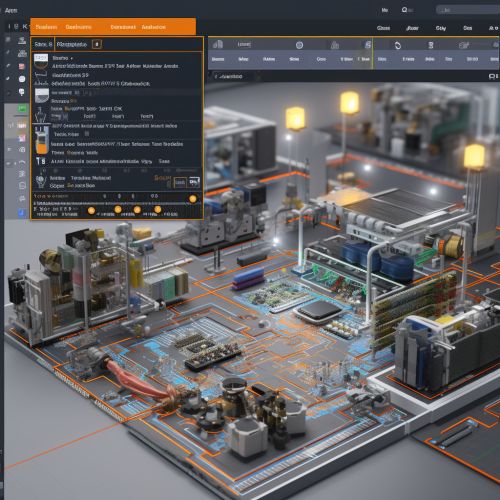Electronic Design Automation
Overview
Electronic Design Automation (EDA), also referred to as electronic computer-aided design (ECAD), is a category of software tools for designing electronic systems such as integrated circuits and printed circuit boards. The tools work together in a design flow that chip designers use to design and analyze entire semiconductor chips. EDA is also utilized for programming design functionality into FPGAs.


History
The beginnings of EDA can be traced back to the 1960s when the first design automation tools were developed. These early tools were essentially computer applications that automated manual methods of design and analysis. The first commercially available EDA tool was introduced by IBM in 1962. This tool, known as DAC-1 (Design Automation Computer-1), was used for logic design.
Design Process
The EDA design process involves a series of steps that are followed to design and analyze a semiconductor chip. These steps include system-level design, logic design, circuit design, physical design, verification, and testing. Each of these steps involves the use of specific EDA tools.
System-Level Design
System-level design involves defining the functionality of the chip at a high level. This is typically done using a hardware description language (HDL) such as VHDL or Verilog. The system-level design is then simulated to verify its functionality.
Logic Design
Logic design involves translating the system-level design into a gate-level representation. This is done using a process known as synthesis, which is performed by a synthesis tool. The gate-level design is then verified using formal verification methods.
Circuit Design
Circuit design involves translating the gate-level design into a transistor-level design. This is done using a process known as physical design, which involves the layout of the physical components of the chip. The physical design is then verified using layout versus schematic (LVS) checks and design rule checks (DRC).
Verification
Verification is a critical step in the EDA design process. It involves checking that the design meets all of the specified requirements and that it functions correctly. Verification is typically done using simulation, formal verification methods, and physical verification checks.
Testing
Testing involves checking the manufactured chip for defects. This is done using a variety of testing methods, including functional testing and structural testing.
EDA Tools
There are a wide variety of EDA tools available, each designed to perform a specific function in the design process. These tools can be broadly categorized into system-level design tools, logic design tools, circuit design tools, physical design tools, verification tools, and testing tools.
System-Level Design Tools
System-level design tools are used to define and simulate the functionality of the chip at a high level. These tools include HDL simulators, system simulators, and system-level synthesis tools.
Logic Design Tools
Logic design tools are used to translate the system-level design into a gate-level representation. These tools include synthesis tools, formal verification tools, and timing analysis tools.
Circuit Design Tools
Circuit design tools are used to translate the gate-level design into a transistor-level design. These tools include layout editors, LVS tools, DRC tools, and parasitic extraction tools.
Physical Design Tools
Physical design tools are used to layout the physical components of the chip. These tools include placement tools, routing tools, and floorplanning tools.
Verification Tools
Verification tools are used to check that the design meets all of the specified requirements and that it functions correctly. These tools include simulation tools, formal verification tools, and physical verification tools.
Testing Tools
Testing tools are used to check the manufactured chip for defects. These tools include functional testing tools and structural testing tools.
Future Trends
With the increasing complexity of semiconductor chips and the demand for shorter design cycles, the role of EDA tools is becoming increasingly important. Future trends in EDA include the development of more advanced tools for system-level design, the integration of AI and machine learning techniques into the design process, and the development of tools for designing chips for emerging technologies such as quantum computing and neuromorphic computing.
